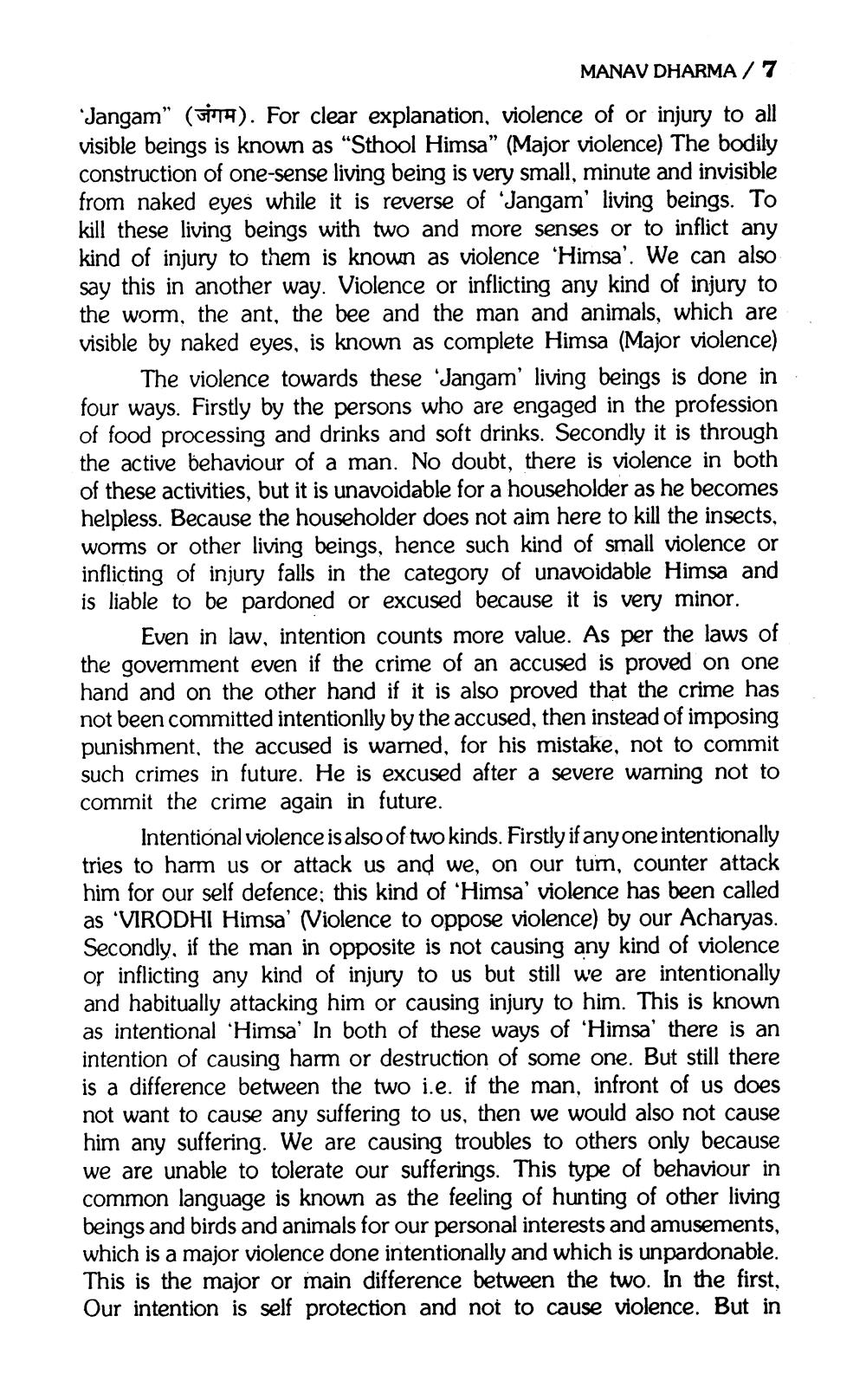________________
MANAV DHARMA / 7 *Jangam” (Hina). For clear explanation, violence of or injury to all visible beings is known as "Sthool Himsa” (Major violence) The bodily construction of one-sense living being is very small, minute and invisible from naked eyes while it is reverse of 'Jangam' living beings. To kill these living beings with two and more senses or to inflict any kind of injury to them is known as violence 'Himsa'. We can also say this in another way. Violence or inflicting any kind of injury to the worm, the ant, the bee and the man and animals, which are visible by naked eyes, is known as complete Himsa (Major violence)
The violence towards these 'Jangam' living beings is done in four ways. Firstly by the persons who are engaged in the profession of food processing and drinks and soft drinks. Secondly it is through the active behaviour of a man. No doubt, there is violence in both of these activities, but it is unavoidable for a householder as he becomes helpless. Because the householder does not aim here to kill the insects. worms or other living beings, hence such kind of small violence or inflicting of injury falls in the category of unavoidable Himsa and is liable to be pardoned or excused because it is very minor.
Even in law, intention counts more value. As per the laws of the government even if the crime of an accused is proved on one hand and on the other hand if it is also proved that the crime has not been committed intentionlly by the accused, then instead of imposing punishment, the accused is warned, for his mistake, not to commit such crimes in future. He is excused after a severe warning not to commit the crime again in future.
Intentional violence is also of two kinds. Firstly if any one intentionally tries to harm us or attack us and we, on our turn, counter attack him for our self defence; this kind of 'Himsa' violence has been called as 'VIRODHI Himsa' (Violence to oppose violence) by our Acharyas. Secondly, if the man in opposite is not causing any kind of violence or inflicting any kind of injury to us but still we are intentionally and habitually attacking him or causing injury to him. This is known as intentional 'Himsa' In both of these ways of 'Himsa' there is an intention of causing harm or destruction of some one. But still there is a difference between the two i.e. if the man, infront of us does not want to cause any suffering to us, then we would also not cause him any suffering. We are causing troubles to others only because we are unable to tolerate our sufferings. This type of behaviour in common language is known as the feeling of hunting of other living beings and birds and animals for our personal interests and amusements, which is a major violence done intentionally and which is unpardonable. This is the major or main difference between the two. In the first. Our intention is self protection and not to cause violence. But in




